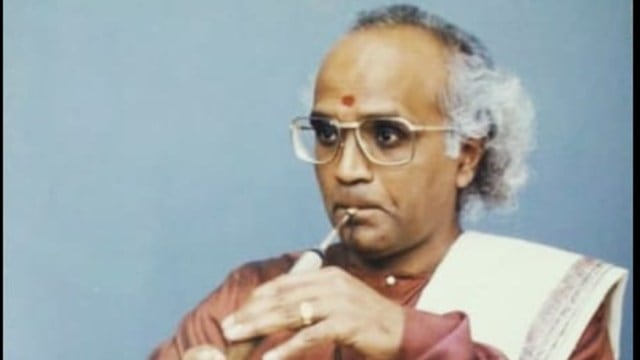📣 For more lifestyle news, click here to join our WhatsApp Channel and also follow us on Instagram
Pandit Daya Shankar, one of the foremost shehnai maestros, passes away
A representative of the Banaras gharana, he will be remembered for his clarity and sweetness in tone and as a generous, gentle teacher
 “When the artiste gets worried about his next meal, the art tends to die,” he had told this reporter in 2017 during an interview. (Photo: Pandit Daya Shankar/Facebook)r
“When the artiste gets worried about his next meal, the art tends to die,” he had told this reporter in 2017 during an interview. (Photo: Pandit Daya Shankar/Facebook)rIn 1988, Head of Soviet Union Mikhail Gorbachev and then Indian Prime Minister Rajiv Gandhi initiated the Festival of the Soviet-Indian Friendship, for which Indian sitar maestro Pandit Ravi Shankar performed at the Kremlin along with 140 musicians comprising the Russian Folk Ensemble, the Government Chorus of Ministry of Culture of USSR, and the chamber orchestra of the Moscow Philharmonic.
While tabla giant Kumar Bose accompanied Shankar on the tabla, another significant sound in all of the compositions was that of the shehnai – played by Pandit Daya Shankar, Ravi Shankar’s student and son and student of Pt Anant Lal – a huge name in the world of the bamboo reeds who could play the flute as well as the shehnai and a contemporary of Ustad Bismillah Khan with Varanasi as the native place of both. The concert at the Kremlin was Pandit Daya Shankar also brought out as an album titled Inside Kremlin, which had the Russian and Indian instruments performing together, with Pt Daya Shankar’s shehnai being a significant part of it.
It’s interesting how the next two generations of the families have continued to perform together. Pt Daya Shankar’s sons Sanjeev Shankar and Ashwini Shankar continued to perform with Anoushka Shankar until Sanjeev’s recent demise in January due to multiple organ failure. He was 47. Two months later, his father, Pt Daya Shankar, who taught him and his two brother Ashwini and Anand the art form, passed away in the Capital. He was in his 70s.
After learning from his father and later Pt Ravi Shankar, Pt Daya Shankar joined All India Radio, Delhi and retired as the shehnai artiste in 2012. He kept performing all over the world. But he was always saddened by the dying fall of shehnai in the last couple of decades, especially after the passing of Ustad Bismillah Khan in 2006.
“When the artiste gets worried about his next meal, the art tends to die,” he had told this reporter in 2017 during an interview.
He felt that the scope of the shehnai had become severely limited — the instrument is not featured in the music syllabus of any university in the country, including the Banaras Hindu University. “In the past, institutionalisation of classical music may have been looked down upon by some of the leading artistes, who believed that music needed to be learned under a guru. But, for it to be taught at the university level, the government needs to fill up the posts available. That helps keep the conversation going. Shehnai is not a part of the syllabus anywhere, unlike the sitar, sarod and flute. That’s reason enough for it to languish,” he had said, adding that the position of shehnai player at All India Radio that he retired from and which had existed as a mandatory category since the formation of AIR in 1936, had been discontinued at radio stations all over the country after his retirement.
But Daya Shankar had continued to carry his family legacy of about 450 years to the mangal vadya, the sound of which was the first that India heard on the morning of its Independence. “With the passing of Sanjeev Shankar earlier this year and now Daya Shankar, we have lost humans and musicians of the highest stature,” wrote his student and Danish saxophone player Lars Møller on his Facebook.
📣 For more lifestyle news, click here to join our WhatsApp Channel and also follow us on Instagram
More Lifestyle
Must Read
Buzzing Now
Apr 06: Latest News
- 0111 hours ago
- 0212 hours ago
- 034 hours ago
- 044 hours ago
- 0513 hours ago





















